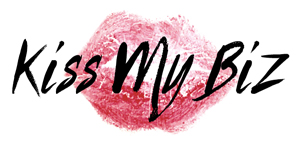Setting appropriate freelance writing fees is difficult for many freelance writers, but it doesn’t have to be. Setting the wrong freelance writing rates can kill a freelance writer’s career, leading to a lack of clients willing to pay the rates or burn out from being forced to take on too much work at lower freelance writing fees just to scrape by.
There’s also another issue in that if writing rates are set too low in the beginning, they can be extremely difficult to raise later on (at least significantly).
Keep the following tips and formula in mind when setting freelance writing rates to get them right the first time.
Don’t Confuse a Freelance Writing Goal with a Salary
Sometimes freelance writers have the misconception that to quit (or replace) a full-time employee position, they should target yearly freelance earnings equivalent to an employee salary. However, the two totals aren’t even close to meaning the same thing. Don’t look at an employee’s salary as a goal when setting freelance writing fees. Instead, freelance writing rates are more comparable to an employee’s total cost to their employer. That includes the salary, any employer contributions to health insurance, retirement savings, or other benefits, the employer’s portion of Medicare and Social Security taxes (in the US – the employee only pays a portion whereas a freelancer pays both the employee and employer amounts as self employment tax), and any other expenses incurred for the employee (from phone calls and basic office supplies to expenses such as the cost of running a marketing campaign).
Use a tool like Salary.com to find the average salary plus bonuses plus benefits for an employee in your area doing similar work to what you offer as a freelance writer.
Differentiate Working Hours from Billable Hours
Freelance writers (especially new writers) planning to freelance full-time often set their freelance writing fees based on a forty hour work week. What they neglect is the fact that forty hours only represents a freelancer’s “working hours.” Not all of those hours can be billed out to clients. Those, in turn, are called “billable hours.” After accounting for administrative work, financial tasks, and marketing, many independent professionals will find that their billable hours are just over half of their total working hours.
Don’t underestimate the time administrative and marketing work can take. Solid record-keeping is important for any freelance writer, and even when your schedule is filled, you should never stop marketing (never wait for a slow period to begin marketing).
Diversify Your Writing Income Streams
Billable hours, by their very nature, are limited. All freelance writers will eventually get to the point where they can’t work any more hours, so the only way to increase their income is to increase their freelance writing fees. Is that really the only way? There are actually other options, such as outsourcing work to sub-contracted writers while keeping a cut of the writing fees. An option that I prefer and recommend is to turn your writing services into products that can serve as passive, or close to passive revenue streams. You can do this with e-books, pre-written content, self-published books and more, all of which can be set up with an automatic sales and fulfillment process (meaning you only have to worry about marketing – even that tones down when word of mouth picks up).
Freelance Switch (a freelance blog) offers an excellent article on diversifying freelance income streams.
Tips & Tactics
- Choose your salary goal based on the cost of an employee in a similar position to a company, and not based on an employee salary (the two numbers aren’t comparable).
- Remember that you won’t have forty billable hours in a full-time working week as a freelance writer, and your freelance writing fees should be set based on billable hours rather than working hours.
- Know that you won’t work a full fifty-two weeks per year when calculating your ideal freelance writing rates. I usually recommend going with forty-five weeks to account for holidays, vacation time, sick days, etc.
- It’s a good idea to “pad” your final calculation by adding around ten percent and then rounding up. This accounts for unexpected issues such as slow periods of work, an extended illness, etc., so you won’t be put in an impossible financial situation that may force you to quit your work as a freelance writer.
- Here is an example final calculation / formula (based on a salary goal of $60,000 per year, forty five work weeks, and twenty three billable hours per week, with ten percent added on at the end as “padding”): (Salary Goal / Weeks Worked / Billable Hours per Week) x 1.10 (10% padding) = Hourly Rate OR (60,000 / 45 / 23) x 1.10 = $63.77 per hour. I would then recommend rounding that total up to either $65 per hour or $70 per hour to simplify billing.
- Once you have an hourly freelance writing fee, you can very easily adapt that to per word or per project billing structures by knowing the average amount of time a project takes you to complete.
